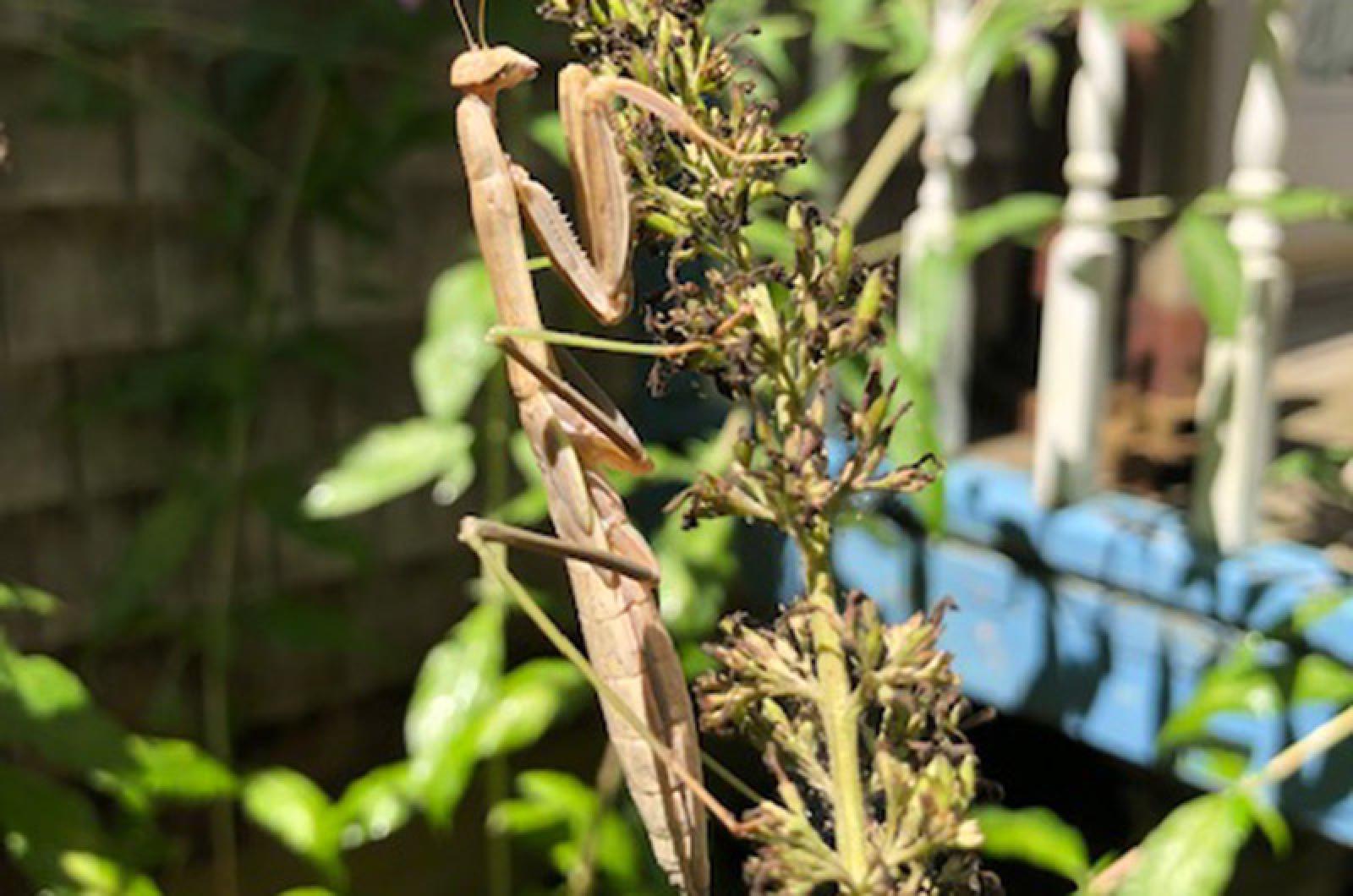“Go green” is not just a trendy slogan. For some, it is an environmental imperative, one that could save our lives and perhaps even our planet.
The same call might be heeded by a common insect whose very existence could also be determined by whether it is able to follow this advice. Color matters to the praying mantis, and might be the reason for its survival or demise.
Consider that mantises in our area can appear as brown or green, and this ability to blend into their environment could keep them safe from predators. But how do these insects choose their hue?
The simple answer is they don’t. The color mantises’ exhibit depends on factors outside of their control, and occurs without their knowledge or effort. They can’t get green with envy or any other way, but will reveal their true colors in habitats of differing shades.
Individual praying mantises do change colors, but they don’t do it quickly, intentionally or reversibly like chameleons. Juveniles grow and molt, and during this process, color changes can occur. And though some have reported white praying mantises, this is a bit of a white lie, since insects do not produce albinos. The pale phenomena can be explained by a temporary absence of color that can be observed for a short period directly after their molt.
A few theories exist to explain the brown and green variations, but a study in Italy has shed some light on the color conundrum. Scientists there found that seasonal and weather factors were the cause of the appearance of the different shades.
In the early part of the season, more brown mantises were observed, while later, a larger number of green individuals were observed. The scientists hypothesized that there were more brown insects during the dry, hot and intense season that yielded yellow and brown vegetation. Later, when temperatures moderated, humidity was high due to increased rain and light was low, more green insects were observed as the vegetation also greened from those conditions. It also makes sense that the scientists found mantises that were well camouflaged, because ones that didn’t blend in were likely eaten by predators.
Adding to the mystery is the fact that praying mantises are color blind, so they can’t make color adjustments to their bodies based on their own observations of their surroundings.
Mantis vision is fascinating and unique. Though they don’t see color, mantises are the only insect with stereopsis or binocular vision. Like humans, they can see in three dimensions, but unlike humans who have larger, more complex brains, they don’t process the images the way we do.
What mantises see is based on what moves, because they don’t register still images. This is unlike humans, who can observe both static and dynamic things, but makes a lot of sense for the mantis which is only concerned with the food or predators moving in the vicinity of its head.
So while praying mantises might lack vision and don’t have power over their pigment, they have long survived and will continue to do so, with flying colors.
Suzan Bellincampi is director of the Felix Neck Wildlife Sanctuary in Edgartown, and author of Martha’s Vineyard: A Field Guide to Island Nature and The Nature of Martha’s Vineyard.




Comments
Comment policy »